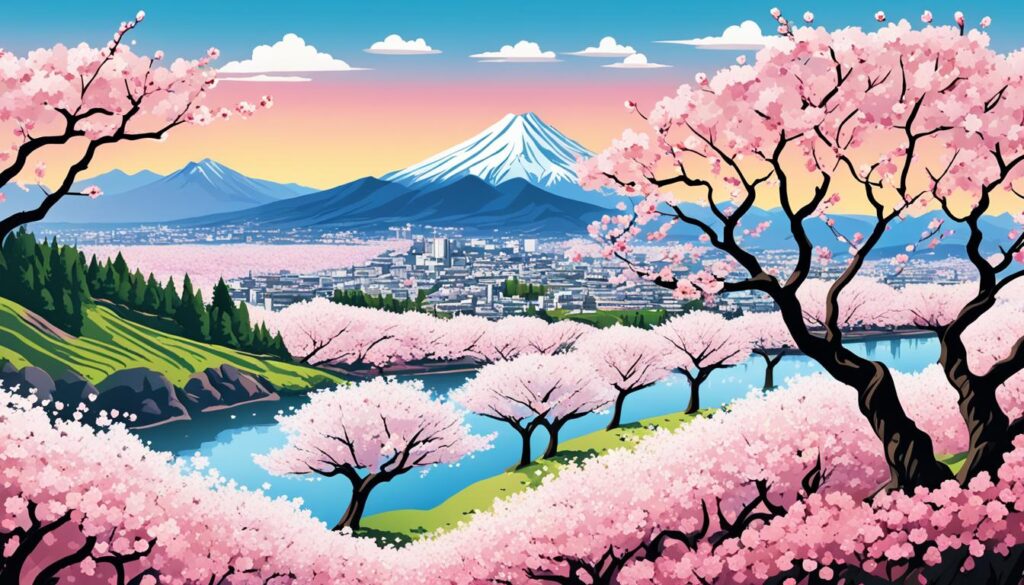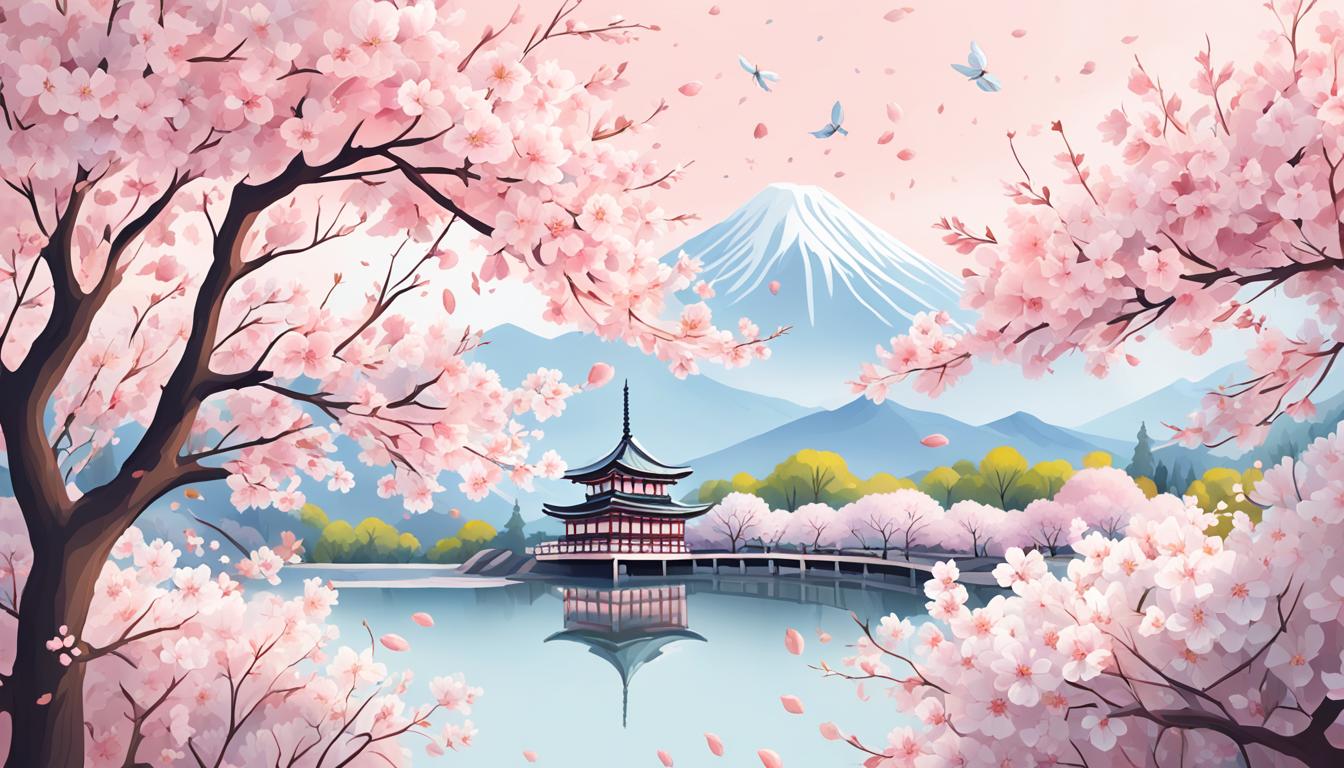Welcome to our guide on how to say “sakura” in Japanese! Sakura, also known as cherry blossoms, hold deep cultural and symbolic meaning in Japanese culture. These beautiful flowers are a symbol of the fleeting nature of life and the beauty of new beginnings. Whether you are planning a trip to Japan or simply have an interest in Japanese language and culture, knowing how to say “sakura” will enhance your understanding and appreciation of this significant word.
Sakura Symbolism and Cultural Significance
Cherry blossoms, also known as sakura, hold deep symbolism and cultural significance in Japan. These delicate flowers represent the transient nature of life, serving as a reminder to cherish every moment and appreciate the beauty that surrounds us. The cherry blossom season, known as hanami, is celebrated with picnics, gatherings, and parties held under the blooming trees. It is a time for people to reflect on the ephemeral nature of existence and find solace in the enchanting beauty of nature.
The significance of sakura extends beyond its fleeting nature. These blossoms also symbolize renewal and fresh beginnings. In Japan, cherry blossoms bloom at the same time as the start of the school year, signifying a new chapter for students and inspiring hope for the future.
Artists, writers, and poets throughout history have drawn inspiration from cherry blossoms, incorporating them into their works as a symbol of beauty, love, and hope. The delicate and ethereal nature of sakura has captivated the hearts of many, serving as a muse for creative expression.
Folklore and Legends Surrounding Sakura
Sakura, or cherry blossoms, have a long-standing history of folklore and legends in Japanese culture. These beautiful flowers hold deep cultural significance and symbolize various aspects of life and spirituality.
In traditional Japanese folklore, cherry blossoms represented the short but vibrant lives of the samurai warriors. The samurai lived by a strict code of honor and discipline, embodying bravery and loyalty. The falling cherry blossoms were seen as a reflection of the fleeting nature of their lives and the sacrifices they made for their country.
During World War II, cherry blossoms took on a new symbolism. They became emblems used by kamikaze pilots, who were willing to sacrifice their lives for their emperor. The cherry blossoms were a powerful symbol of their determination and loyalty.
Cherry blossom trees also hold significance in Japanese folk religions. They were believed to be inhabited by mountain deities and worshipped for agricultural prosperity. These beliefs and stories contributed to the cultural significance and symbolism of sakura in Japan.
The legends and folklore surrounding cherry blossoms further enhance their beauty and meaning. They serve as a reminder of the transient nature of life, the sacrifice of the samurai, and the resilience and devotion of the Japanese people.
Famous Cherry Blossom Trees in Japan

Japan is renowned for its famous cherry blossom trees that captivate visitors from all over the world. These majestic trees create breathtaking landscapes and provide perfect viewing spots for cherry blossom enthusiasts. Let’s explore some of the most notable cherry blossom trees in Japan:
Miharu Takizakura
The Miharu Takizakura, located in Fukushima, is a remarkable cherry blossom tree that is over a thousand years old. This ancient tree, also known as the “Waterfall Cherry Tree,” showcases a cascading display of delicate pink blossoms during its peak bloom. The Miharu Takizakura is a symbol of resilience and natural beauty, attracting countless visitors every year.
Usuzumi Zakura
In Gifu Prefecture, the Usuzumi Zakura stands as a unique and admired cherry blossom tree. Its distinctive feature is the pale-gray color of its blossoms, which gradually turn a beautiful gray hue before falling. The Usuzumi Zakura is surrounded by folklore and legends, further enhancing its allure for those seeking a magical cherry blossom experience.
Jindai-Zakura
The Jindai-Zakura in Yamanashi Prefecture is one of the oldest cherry trees in Japan, believed to be between 1,800 to 2,000 years old. This ancient giant has witnessed centuries of Japan’s history and continues to flourish with stunning pink blossoms each spring. The Jindai-Zakura is an awe-inspiring testament to the enduring beauty and significance of cherry blossoms.
These famous cherry blossom trees, among many others throughout Japan, create picturesque landscapes and draw crowds of visitors during the cherry blossom season. Whether you’re seeking a tranquil spot for contemplation or a vibrant festival atmosphere, Japan offers a multitude of cherry blossom viewing spots and festivals that celebrate the ephemeral beauty of sakura.
Cherry Blossom Season in Japan
Cherry blossom season in Japan is a magical time that typically occurs from the end of March to the beginning of April. However, it’s important to note that the exact timing of the cherry blossoms can vary depending on the region and weather conditions. Planning your visit during the peak blooming period will ensure that you don’t miss out on the breathtaking beauty of the cherry blossoms.
The blooming of cherry blossoms is highly anticipated by both locals and tourists, as it signals the arrival of spring and the vibrant display of pink and white flowers. Parks and gardens across Japan transform into popular spots for hanami, which is the tradition of cherry blossom viewing. People gather with friends and family to have picnics, enjoy the scenery, and appreciate the delicate blooms.
To make the most of your cherry blossom experience, it’s recommended to check the weather forecasts and keep an eye on the blooming predictions. These predictions are often provided by meteorological agencies and cherry blossom associations. Planning your trip during the peak blooming period will allow you to fully immerse yourself in the beauty of sakura, as the trees will be adorned with a blissful abundance of blossoms.
Whether you choose to visit the iconic cherry blossom spots of Tokyo, Kyoto, or other cities and regions in Japan, you’re guaranteed to witness the awe-inspiring spectacle of nature’s delicate artistry. The ephemeral nature of the cherry blossoms reminds us to embrace the fleeting moments and find joy in the transient beauty of life.
Cherry Blossom Forecast in Major Cities
| City | Estimated Blooming Period |
|---|---|
| Tokyo | End of March to the beginning of April |
| Kyoto | End of March to the beginning of April |
| Osaka | End of March to the beginning of April |
| Hiroshima | End of March to the beginning of April |
| Sapporo | Early May |
Cherry Blossoms Beyond Japan
While cherry blossoms are most closely associated with Japan, their beauty and allure can be found in other parts of the world as well. One notable event is the National Cherry Blossom Festival in Washington, D.C., which is a celebration of the gift of cherry trees from Japan. This festival attracts visitors from around the country who come to admire the stunning display of cherry blossoms.
Other countries have also embraced the charm of cherry blossoms and host festivals and gardens dedicated to these delicate flowers. In Korea, the Jinhae Cherry Blossom Festival showcases breathtaking pink blooms that blanket the city in a mesmerizing display. Similarly, Germany, France, and Denmark host their own cherry blossom festivals, where locals and tourists alike can revel in the beauty of these ephemeral flowers.
Cherry blossoms have become a universal symbol of beauty and renewal, uniting people from different cultures and backgrounds. It is a testament to the enduring appeal and significance of these delicate flowers, which continue to captivate and inspire people outside of Japan.

